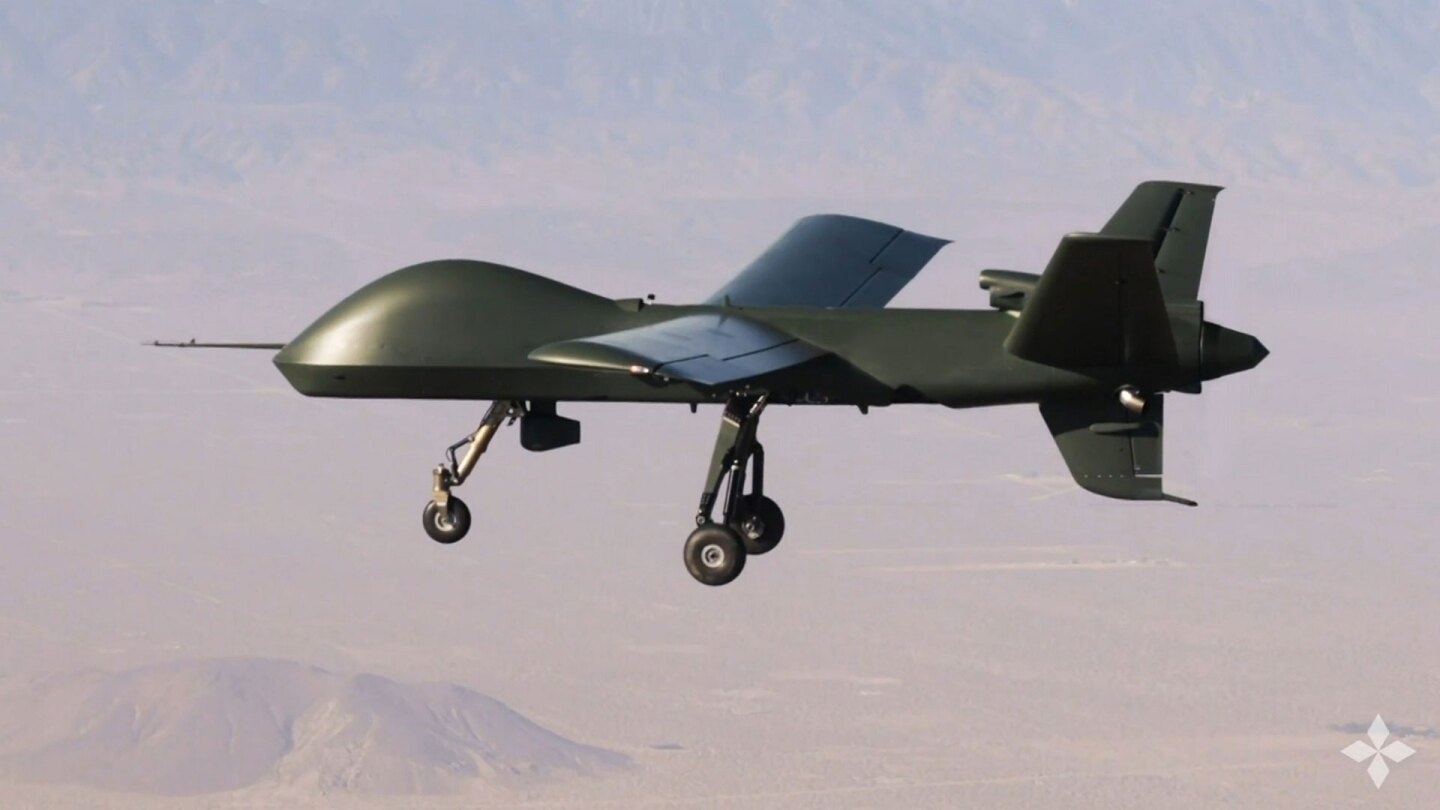General Atomics Aeronautical Systems has unveiled its latest fixed-wing drone, the Mojave, which can carry an unprecedented weapon load of up to 16 precision air-to-ground 100-lb (45-kg) AGM-114 Hellfire missiles and operate from short, rugged airstrips.
Based on the previous MQ-9 Reaper and the MQ-1C Gray Eagle, the Mojave is aimed primarily at special forces units that often have to operate from ships at sea or from forward bases that may be little more than a short length of grass or gravel serving as a makeshift runway. Because of this, the Mojave has a new, stronger undercarriage, a 450-bhp Rolls Royce M250 engine, and improved wing aerodynamics that allow it to make short, rugged takeoffs, depending on the payload, which can be as high as 3,600 lb (1610 kg).
Designed to operate by satellite relay or direct line-of-sight, the Mojave can be controlled by either a remote pilot or by ground forces using a handheld unit about the size of a hardback book. It can be deployed either stowed as cargo in a military transport aircraft or self-deploy with a flight endurance of up to 27 hours when taking off on a long runway without a payload and with a full fuel load.

General Atomics
According to General Atomic, when the Mojave is without external payload, it can outperform any crewed fixed-wing turboprop light aircraft. Once on site, the Mojave can be used for intelligence, surveillance and reconnaissance using its high-resolution electro-optical infrared sensor in the nose and the Eagle Eye Long-Range radar, or as a combat platform to support ground forces.
It can carry up to 16 Hellfire missiles, or a mix of other ordnance, including the Dillon Aero M134D-H minigun. With a load of 12 Hellfires and a 1,600-ft (488-m) runway, the drone could provide special forces with fire support for up to nine hours. If the aircraft is deployed by transport, it can be assembled in only three hours using hand tools and expeditionary equipment.
Source: General Atomics Aeronautical Systems
Source of Article
